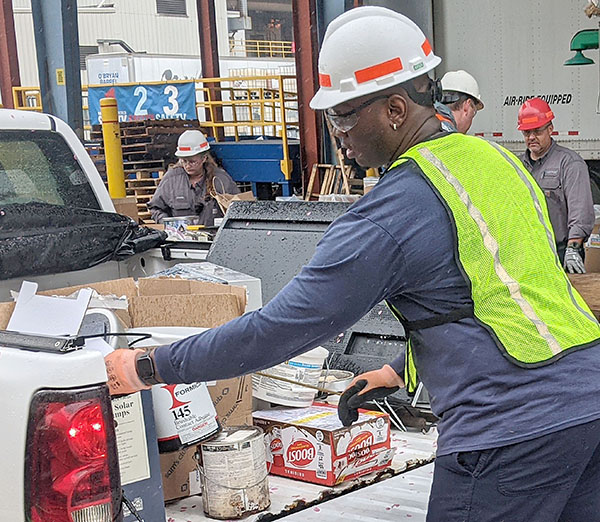We’ve been talking a lot recently about closed container guidelines. We covered recommendations for containers in central accumulation areas, containers holding liquids in satellite accumulation areas, and containers collecting solid or semi-solid wastes in satellite accumulation areas. Today we’re going to cover why closed container guidelines are so important and what best practices you could have in place to help ensure your containers stay closed.
The main point is that closed containers prevent spills. While it is true that regulations allow for flexibility in the definition of closed that in no way means you should not be diligent about keeping your containers from spilling. The first best practice the EPA suggests is making sure that your containers are located in low traffic areas. This means away from things like forklifts. Doing so reduces the number of opportunities for accidental tipping over and/or spilling of drums. They recommend this practice in both CAAs and SAAs.
The second suggestion involves containers with lids that are not securely affixed (with a bolted ring clamp or locked funnel lid). The EPA recommends that generators secure these containers with a chain or strap to a wall or building support column to keep them from tipping over and/or spilling. This is especially important in areas where seismic activity is a danger. If no building support is available then the EPA suggests strapping the containers together to keep them from overturning. A larger group of drums is less prone to overturning than a single one. They do caution that generators must “continue to comply with the SAA requirements that the container be located at or near the point of generation and not exceed the quantity limitation of 55 gallons.”
The third best practice, while not required in 40 CFR, is still a good system to have in place. Using secondary containment systems for accumulating hazardous wastes can be an inexpensive (in the case of using a pan or tub to collect ay release or spill that could occur when adding or removing waste) and effective for catching wastes from a leaky container. Additionally, valve vents or level indicators can be used to prevent pressure buildup after adding liquids to drums. Level indicators in particular can help to prevent overfilling a container which could result in unsafe working conditions and a pricey cleanup project.
The last tip is more a reminder than a best practice. It is that regulations require containers to be closed (except when adding or removing waste) even when a plant is not operating. This is because spill and emission prevention is vital 24/7. It’s true that most accidents don’t occur when a plant is closed or inactive but regulations still require containers to be closed in order to prevent volatile emission releases. The EPA also states that, “requiring an operator to secure the cover or lid using snap rings, capping the bungholes, or securely fastening the container with other types of covers or lids is not time consuming and adds protection for the facility when it is closed down for the weekend or periods of inactivity.”
Does your company have any other best practices for keeping containers closed? Have you found anything that works better than the ideas provided by the EPA? If so, we would love to hear about them, just let us know in the comments section!
Quoted and cited information (unless otherwise noted) for this blog post was gathered from the EPA Memorandum on Closed Containers. As always, this blog post is not intended to be comprehensive and it is always best to check with the EPA and local government for full, up-to-date, rules and regulations.
More News From Heritage
-
6/27/24
Heritage Environmental Services to Acquire EBV from General Dynamics
Heritage Environmental Servicess, an EQT Infrastructure portfolio company, will acquire EBV from General Dynamics
-
6/13/24
Meet The Facilities – East Liverpool
An inside look at our incineration facility located in East Liverpool, OH
-
5/24/24
Habitat for Humanity 2024
Heritage hosted our 14th annual Habitat for Humanity build this month, partnering with over 50 employees from various THG companies.
-
5/6/24
Date set for the household hazardous waste collection in East Liverpool, Ohio
-
3/12/24
Equal Pay Day – Spotlighting Our Female Drivers
-
3/8/24
International Women’s Week Spotlight – Shannon Dippel
For International Women's Week, we're spotlighting some of the incredible women in the Heritage family. Our final spotlight is Shannon Dippel.
-
3/8/24
International Women’s Week Spotlight – Susan Adams
For International Women's Week, we're spotlighting some of the incredible women in the Heritage family. Our sixth spotlight is Susan Adams.
-
3/7/24
International Women’s Week Spotlight – Lea Wilson
For International Women's Week, we're spotlighting some of the incredible women in the Heritage family. Our fifth spotlight is Lea Wilson








